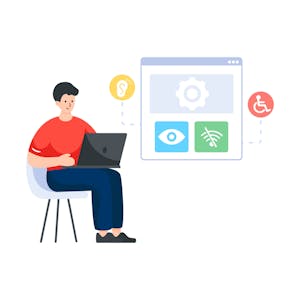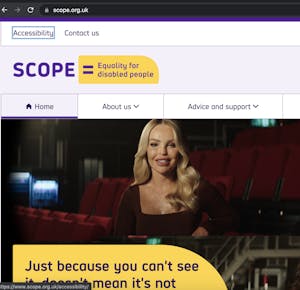- 7 minute read
- Content Marketing
- SEO
- Social Media
- Websites
Separating SEO Fact from Fiction: Don’t Fall for These 4 SEO Myths
All Skill Levels
Join hundreds of other operators and REGISTER NOW for Spark 2024 New Orleans October 13-15th!

Web accessibility can feel overwhelming if you’re just learning about it for the first time, especially as you parse out laws, guidelines, and misconceptions. You may think it’s too complicated, time-consuming, or just not that important to make your website more accessible. But web accessibility is, in fact, an essential part of running a website for your business.
Let’s demystify this often-misunderstood topic by debunking some of the most common myths.
First and foremost, all business owners should care about accessibility in general because it’s the right thing to do. But it also makes good business sense, as it ensures that you’re not leaving out an important part of your potential customer base.
Web accessibility in particular has multiple benefits for your business:
It’s true that the U.S. has a robust legal framework around website accessibility thanks to the Americans with Disabilities Act (ADA). The act was created in 1990 to ensure people with disabilities have the same rights and opportunities as those without. While it doesn’t mention websites specifically, courts generally interpret the act’s reference to “places of public accommodation” to include digital spaces such as websites.
However, the U.S. is not the only country to pass such legislation. Many countries around the world have similarly well-developed legislation, including the European Union (Web Accessibility Directive), Canada (Standard of Web Accessibility), Australia (Disability Discrimination Act of 1992), and the U.K. (Equality Act of 2010). No matter where you operate your business, there are most likely accessibility laws you need to be aware of, especially when it comes to operating transactional websites.
Most of these countries rely on the Web Content Accessibility Guidelines (WCAG), which are developed in collaboration with individuals and organizations around the world. While they are not laws, these guidelines are the widely accepted standard for websites all over the world, and many countries require compliance with them.
 Thinking about how users who are blind or visually impaired will navigate your website is a great start. But accessibility doesn’t end there. An accessible website helps people with a variety of disabilities, such as limited mobility requiring the use of a switch device, cognitive issues (such as dyslexia), hearing difficulty or impairment, and more. Keyboard accessibility is an important factor, allowing users to tab through the website without use of a mouse.
Thinking about how users who are blind or visually impaired will navigate your website is a great start. But accessibility doesn’t end there. An accessible website helps people with a variety of disabilities, such as limited mobility requiring the use of a switch device, cognitive issues (such as dyslexia), hearing difficulty or impairment, and more. Keyboard accessibility is an important factor, allowing users to tab through the website without use of a mouse.
Keep in mind that accessibility is not just for people with physical disabilities. It also benefits people with some forms of neurodivergence, chronic illness, and aging users, to name a few.
As we mentioned before, there are many different types of disabilities, and you could alienate a large percentage of your potential customers if you don’t strive for accessibility. In the U.S., the CDC estimates that 26% of adults live with a disability. That’s about one in four people. On a more global scale, the United Nations estimates that there are around 1 billion people with disabilities worldwide.
While there are many components to web accessibility, there are simple steps you can take to quickly make your website more accessible. This includes adding alt text to images, adding captions to videos, adding a text alternative to audio elements, and ensuring you have an organized heading structure. Check out our website accessibility guide and inclusive UX writing guide to get started.
If you’re ready to dig deeper, you can review the WCAG to learn more about accessibility. The guidelines are quite detailed, so it does get more complicated as you drill down into the criteria. Work with your web developer to better understand what actionable steps you can take on your website. You can also explore Google’s accessibility resources for web developers.
Now that you know the truth about web accessibility, you can start implementing elements to improve your website’s accessibility. In addition to legal compliance and business advantages, web accessibility brings the ethical benefit of knowing your website is welcoming to all. Want to learn more about this topic? Read our guide to making your tours more accessible.